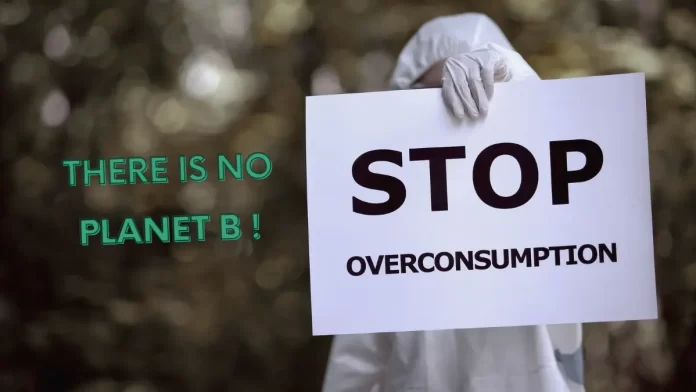1. Premise
In today’s fast-paced world, advertisements and marketing campaigns bombard the latest gadgets and household appliances. From smart TVs to kitchen appliances, it can be tempting to upgrade our electronics and appliances frequently to stay on top of the latest trends. Consequently, such an attitude of overconsumption has significant negative consequences for the environment and society at large.
2. The Environmental Impact of Household Electronics, Mobiles, and Appliances
Natural resource depletion:
The production of electronics and appliances requires a significant amount of natural resources, including minerals like gold, silver, and copper. The extraction of these resources from the earth has a severe impact on the environment, leading to soil erosion, deforestation, and water pollution.
Carbon emissions:
The transportation of electronics and appliances also has a significant environmental impact, contributing to greenhouse gas emissions and climate change. Additionally, the energy required to power these devices often comes from non-renewable sources, further exacerbating the problem.
Electronic waste:
E-waste is a growing global problem, with an estimated 50 million tons of electronic waste generated worldwide each year. This waste contains harmful substances like lead, mercury, and cadmium, which can leach into soil and water and pose significant health risks.
3. The Social Consequences of Overconsumption
Exploitation of labor:
The production of electronics and appliances often involves labor exploitation.
Paying low wages to workers in developing countries and working in unsafe and unhealthy conditions.
Exposure to toxic chemicals and hazardous waste leads to long-term health problems of said workers.
Inequality:
The overconsumption of electronics and appliances also contributes to inequality, with low-income households often unable to afford the latest gadgets and appliances. This digital divide can further exacerbate existing social and economic inequalities.
Overconsumption and materialism:
The overconsumption of electronics and appliances also contributes to inequality, with low-income households often unable to afford the latest gadgets and appliances. This digital divide can further exacerbate existing social and economic inequalities.
4. Alternatives to Overconsumption of Household Electronics, Mobiles, and Appliances
Adopt a minimalist approach:
A minimalist lifestyle involves simplifying one’s possessions and reducing overall consumption. By adopting this approach, we can reduce our environmental impact and focus on what truly matters in life. Consider asking yourself the following questions before making a purchase:
- Do I really need this item?
- Can I make do with what I already have?
- Is this item of high quality and built to last?
Explore alternative solutions:
There are many alternatives to traditional electronics and appliances that are more sustainable and eco-friendlier. For example:
- Solar-powered chargers and battery packs can help reduce the need for disposable batteries and power outlets.
- Use Rechargeable batteries in place of disposable batteries, reducing waste.
- Use hand-powered kitchen appliances, like manual can openers and egg beaters, in place of electric appliances.
Purchase secondhand:
Purchasing secondhand electronics and appliances is an excellent way to reduce waste and save money. Online marketplaces like eBay, Facebook and OLX make it easy to find secondhand items, and many thrift stores and garage sales also offer electronics and appliances at reduced prices.
5. Statistics
To provide some context on the impact of electronics and appliances, here are some relevant statistics:
- The production of electronics accounts for approximately 2% of global greenhouse gas emissions (Greenpeace).
- E-waste is projected to reach 74 million tons by 2030, with only 17.4% of it being properly collected and recycled (UNEP).
- The electronic waste generated in the US in 2019 alone was equivalent to 6.9 kg per person (EPA).
| Appliance | Energy Consumption (kWh/year) |
| Refrigerator | 657 |
| Clothes Dryer | 901 |
| Dishwasher | 330 |
| Television | 200 |
| Desktop (Computer) | 194 |
| Desktop (Computer) | 75 |
| Desktop Computer | 5 |
6. What we can do – Way-forward
The overconsumption of household electronics, mobiles, and appliances has significant negative consequences for the environment and society. By adopting a minimalist approach to consumption, exploring alternative solutions, and purchasing secondhand, we can reduce our environmental impact and promote a more sustainable and equitable future. It is important to be conscious of our consumption habits and make informed decisions about our purchases to ensure that we are not contributing to a harmful culture of overconsumption.






























